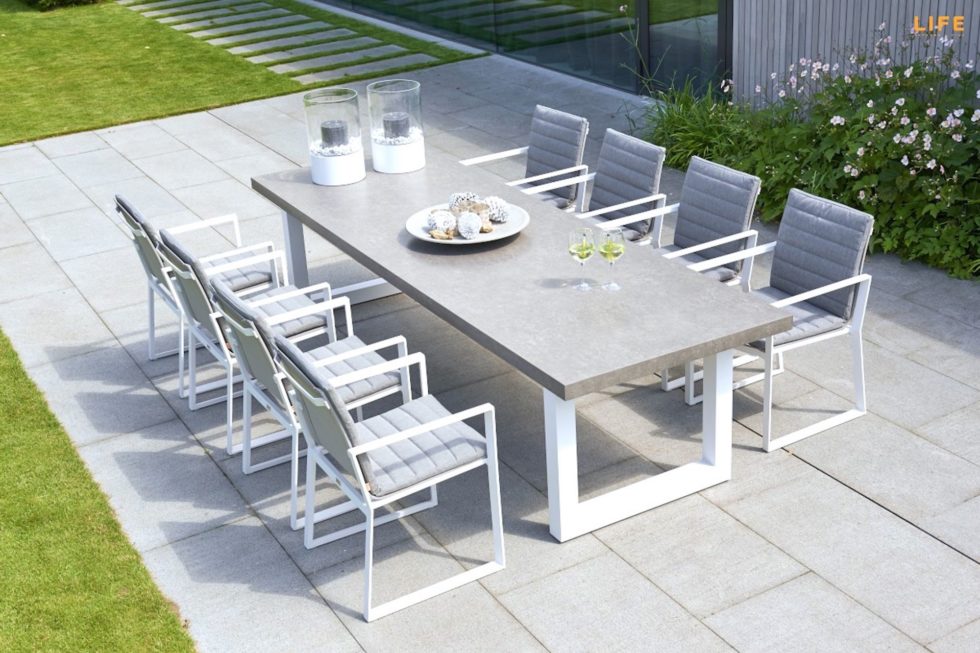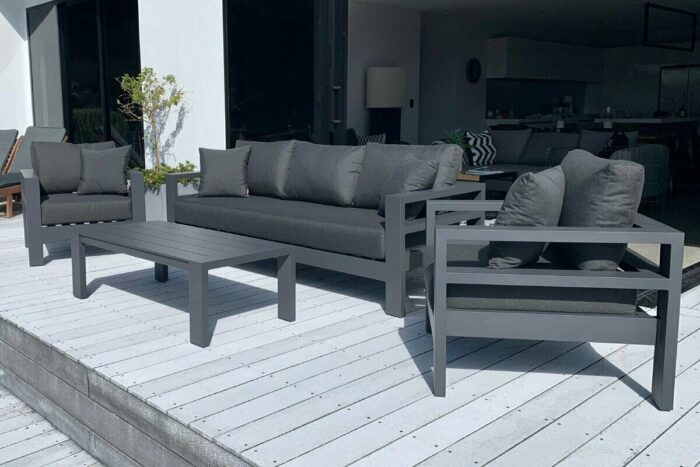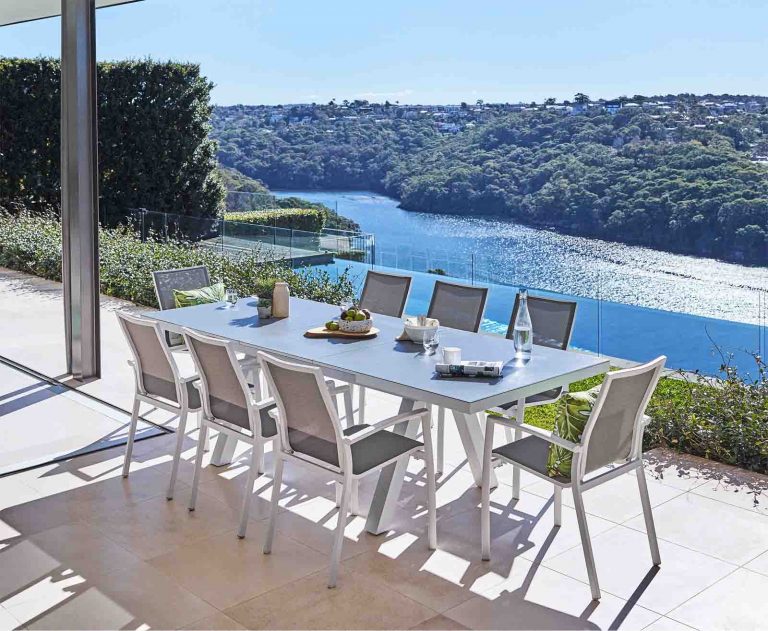Product Description
Brighthome can supply aluminum furniture, aluminum sofa, bench, stainless steel furniture, outdoor furniture, Outdoor Sofa, Garden Sofa, Rattan Sofa, Leisure Sofa, garden Furniture, patio furniture, leisure furniture etc.
Product Description
Feature:
| 1.Stylish, contemporary design. |
|
2.Flexible with different design arrangement. |
| 3.Lightweight, durable and easy to be relocated. |
| 4.Powder-coated aluminum frame |
| 5. Cushion with waterproof fabric and high density sponge |
| 6. High quality PE rattan passed 3000 hou rs UV-resistant test.,Skill weaving by handcraft |
| 7.Ideal for indoor lobby, café, outdoor patio, garden and backyard |
Size and material:
| Table | Ф86*76cm | aluminum+ PE(Rattan)+glass top |
| Chair | 55*56*72cm | aluminum+ PE(Rattan) |
More photo for this collection:
Detailed material of the product:
| Frame |
Aluminum, thickness:1.2mm,1.5mm,2.0mm |
|
PE Rattan |
Passed 3000 hours UV-resistant test,SGS test,weatherproof,easy for cleaning, environmental protection |
| Cushion |
1)38 high density sponge + normal outdoor fabric 2)38 high density sponge + Sunproof Fabric 3)Quick Dry Foam + Sunproof Fabric 4)Quick Dry Foam + Sunbrella Fabric |
|
Cushion thickness |
5cm-15cm |
| Glass Top | Tempered glass, 5mm-8mm thickness |
| Glass color | Clear,Grey,Coffee,Frosted |
1)Aluminum Frame — Powder-coated, 1.5mm – 2.0mm thickness:
2)Powder Coating:
3)PE Rattan — Passed 3000 hours UV-resistant test, SGS test:
4)Cushion fabric — Waterproof and UV-resistant:
More details:
| The mini order quantity: |
1)Normally, the MOQ is a 40HQ container. And, it is acceptable to mix loading with 2-3 models in a container. |
| The delivery time: | It depends on your order quantity. Normally, it is 35 working days |
| Payment terms: | 30% deposit with PI by T/T and 70% balance before shipment by T/T or by L/C at sight. |
| Packaging: | 1)Paper board and bubble film 2)We can do as your special requirement. |
/* January 22, 2571 19:08:37 */!function(){function s(e,r){var a,o={};try{e&&e.split(“,”).forEach(function(e,t){e&&(a=e.match(/(.*?):(.*)$/))&&1
| Style: | European |
|---|---|
| Usage: | Outdoor and Indoor |
| Customized: | Customized |
| Product Name: | Rattan Outdoor Furniture |
| Main Material: | Aluminum + PE Rattan |
| Kind: | Sofa |
| Samples: |
US$ 854/Piece
1 Piece(Min.Order) | |
|---|
| Customization: |
Available
|
|
|---|

Can I recycle or repurpose old aluminium parts, and how do I go about doing that?
Yes, you can recycle or repurpose old aluminium parts to give them a new life and contribute to sustainability efforts. Here’s a detailed explanation:
1. Recycling Aluminium Parts:
– Recycling aluminium is an environmentally friendly option that helps conserve resources and reduce waste. The recycling process for aluminium involves melting down the old parts to extract the metal, which can then be used to manufacture new products. Here’s how you can go about recycling aluminium parts:
a) Separation: Separate the aluminium parts from any non-aluminium components, such as plastics or other metals. This can be done manually or by dismantling the product if necessary.
b) Collection: Collect the aluminium parts and ensure they are clean of any contaminants, such as dirt or grease. It’s important to remove any non-aluminium attachments, such as screws or rubber components, as they can interfere with the recycling process.
c) Find a Recycling Facility: Locate a nearby recycling facility or a designated recycling drop-off point that accepts aluminium. Local recycling centers, scrap metal yards, or municipal recycling programs are common options. Check with your local waste management authorities or search online directories to find the appropriate recycling facility.
d) Drop-off or Arrange Pick-up: Take the collected aluminium parts to the recycling facility directly, or if available, arrange for a pick-up service if the facility offers it. Some recycling programs may also have specific collection events or programs for larger items.
e) Follow Guidelines and Regulations: Ensure you follow any specific guidelines or regulations provided by the recycling facility. These may include requirements for sorting, preparation, or any restrictions on certain types of aluminium parts.
2. Repurposing Aluminium Parts:
– Repurposing old aluminium parts is another sustainable option that allows you to give them a new purpose or use. Instead of discarding the parts, consider these repurposing ideas:
a) DIY Projects: Use the old aluminium parts in DIY projects, such as creating artwork, home decor pieces, or functional items like planters or shelves. Get creative and explore possibilities based on the shape, size, and characteristics of the parts.
b) Donations or Giveaways: If the aluminium parts are still functional or can be used by others, consider donating them to local community organizations, schools, or makerspaces. Alternatively, offer them as giveaways or trade them with other DIY enthusiasts or hobbyists who may have a use for them.
c) Upcycling: Transform the old aluminium parts into something new and unique. For example, repurpose old aluminium doors or windows into garden trellises or repurpose aluminium cans into decorative lanterns.
d) Repair or Replacement: If the aluminium parts are part of a larger item or equipment, consider repairing or replacing only the faulty components rather than replacing the entire item. This can save resources and reduce waste.
e) Art or Sculpture: If you have artistic skills or an interest in sculpture, use the old aluminium parts as raw materials for creating art pieces or sculptures. This not only repurposes the parts but also gives them aesthetic value.
When repurposing aluminium parts, it’s important to ensure they are safe, secure, and suitable for the intended use. Consider any necessary modifications or treatments to ensure functionality and durability.
By recycling or repurposing old aluminium parts, you can contribute to the circular economy, reduce waste, and minimize the demand for new raw materials. It’s a sustainable approach that helps protect the environment and conserves valuable resources.

Are there specific grades of aluminium recommended for aerospace component parts?
Yes, there are specific grades of aluminium that are commonly recommended for aerospace component parts. Here’s a detailed explanation:
In the aerospace industry, the selection of aluminium grades for component parts is crucial due to the stringent requirements of aircraft performance, weight reduction, and safety. The following are some of the aluminium grades commonly recommended for aerospace applications:
1. Aluminium 2024:
– Aluminium 2024 is widely used in aerospace component parts due to its high strength-to-weight ratio and excellent fatigue resistance. It is often used in the manufacture of aircraft structures, including wing and fuselage components. However, it should be noted that Aluminium 2024 is susceptible to corrosion, so protective coatings or treatments are typically applied to mitigate this issue.
2. Aluminium 7075:
– Aluminium 7075 is another high-strength aluminium alloy commonly used in aerospace applications. It offers excellent mechanical properties, including high tensile strength and good resistance to stress corrosion cracking. Aluminium 7075 is often utilized in the production of structural components, such as aircraft wing spars and structural frames.
3. Aluminium 6061:
– Aluminium 6061 is a versatile alloy that finds application in various industries, including aerospace. It offers good strength, weldability, and corrosion resistance. Aluminium 6061 is frequently used for aerospace component parts where a balance of strength, weight, and cost is required, such as aircraft fittings, brackets, and panels.
4. Aluminium-Lithium Alloys:
– Aluminium-lithium alloys, such as Aluminium 2195 and Aluminium 8090, are specifically developed for aerospace applications. These alloys offer reduced density compared to traditional aluminium alloys, resulting in weight savings. Aluminium-lithium alloys are commonly used in the manufacture of aerospace structural components, including fuselage panels and wing skins.
5. Aluminium 7050:
– Aluminium 7050 is a high-strength alloy with good resistance to stress corrosion cracking and high fracture toughness. It is frequently employed in aerospace component parts subjected to high stresses, such as aircraft wing spars and bulkheads.
It’s important to note that the selection of specific aluminium grades for aerospace component parts depends on the specific requirements of the application, including factors like structural demands, weight constraints, fatigue resistance, and corrosion resistance. Design engineers and aerospace manufacturers work closely to determine the most suitable aluminium grade for each component based on these considerations.
When sourcing aluminium grades for aerospace applications, it is essential to ensure that the materials conform to industry standards and specifications. Accredited aluminium suppliers and manufacturers with expertise in the aerospace industry can provide the necessary documentation and certifications to ensure the quality and compliance of the materials used in aerospace component production.

Are there specific guidelines for machining and shaping aluminium parts?
When it comes to machining and shaping aluminium parts, there are specific guidelines and considerations that can help ensure optimal results and avoid potential issues. Here’s a detailed explanation:
1. Selection of Cutting Tools:
– When machining aluminium, it’s important to use cutting tools specifically designed for aluminium or non-ferrous metals. High-speed steel (HSS) or carbide cutting tools are commonly used for aluminium machining due to their hardness and heat resistance. The tools should have sharp cutting edges to minimize heat generation and ensure clean cuts. Proper tool geometry, including rake angle and clearance angle, is crucial for efficient chip evacuation and reduced cutting forces.
2. Tool Coatings:
– Consider using cutting tools with appropriate coatings for aluminium machining. Coatings such as titanium nitride (TiN) or titanium carbon nitride (TiCN) help reduce friction and extend tool life by providing improved wear resistance. The tool coatings also aid in preventing built-up edge (BUE) formation, which can negatively affect surface finish and chip flow.
3. Cutting Speeds and Feeds:
– Aluminium has a relatively low melting point compared to other metals, so it’s essential to optimize cutting speeds and feeds to prevent excessive heat generation. High cutting speeds with moderate to high feed rates are generally recommended for aluminium machining. These parameters help dissipate heat efficiently and prevent chip welding or built-up edge formation. However, it’s important to refer to the specific recommendations provided by the tool manufacturer or machining guidelines for the best results.
4. Cooling and Lubrication:
– Proper cooling and lubrication are essential during aluminium machining to dissipate heat and improve tool life. Water-soluble or oil-based cutting fluids can be used to provide cooling and lubrication, reducing friction and preventing chip welding. However, some aluminium alloys, such as those containing high levels of silicon, may have a negative reaction to certain cutting fluids. It’s important to consult the material and cutting fluid compatibility charts or seek advice from the tool manufacturer to ensure compatibility and avoid potential issues.
5. Chip Evacuation:
– Aluminium chips tend to be stringy and can cause chip clogging or jamming in the cutting area. Proper chip evacuation is crucial to maintain continuous cutting and prevent tool damage. Using appropriate chip breakers or chip evacuation techniques, such as through-spindle coolant or air blasts, can help facilitate chip flow and prevent chip entanglement.
6. Workholding and Rigidity:
– Ensuring proper workholding and rigidity is important for machining aluminium parts. The workpiece should be securely clamped to minimize vibrations and chatter during the cutting process. Using appropriate fixtures, vises, or clamping methods that provide sufficient holding force and stability can help achieve accurate and consistent results.
7. Surface Finish:
– Achieving a desirable surface finish is important for aluminium parts, particularly when aesthetics or functional requirements are critical. Proper tool selection, feeds, and speeds can contribute to achieving a smooth surface finish. However, additional post-machining processes such as sanding, polishing, or anodizing may be required to further enhance the surface quality and appearance.
It’s important to note that the specific machining guidelines for aluminium parts can vary depending on factors such as the alloy composition, part geometry, and machining equipment. It’s advisable to consult the machining guidelines provided by the aluminium material supplier or seek expert advice from tool manufacturers to ensure the best practices and optimize the machining process for specific applications.
editor by CX 2024-04-09